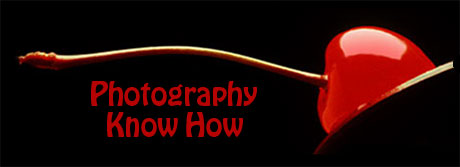Taking photos at night is a challenge, but the results of good night scene photography can be spectacular. Here are some excellent tips on taking better night photos…
Article : How to Take Better Night Photos
by Guest Photographer: Gary Hendricks
Do you like to take photos at night? I know I do. There’s something magical about them – pictures of the moonlight sky and dazzling neon lights convey a special something that daytime photos can’t.
When I started out taking digital photos at night, boy, did I have problems! The issue is that many digital cameras do not perform very well under low-light conditions. To take good night photos, there are some tricks you need to remember – so here are a few of them.
Tip 1: Use Long Exposures
The key to successful night photography lies in a long exposure. We’re talking about exposures measured in seconds. When a long exposure is used, more light is allowed into the camera, allowing the details in your night photo to be captured.
The problem with using long exposures is that you may shake the camera, resulting in poor pictures. The way around this is to use a tripod. I prefer to install a tripod with a shutter-release cable to ensure that I don’t jolt the camera at all.
Tip 2: Take Control Shots
One problem with digital cameras is that there are always some pixels on the image sensor which are bad. When taking day photos, these defects are not discernible. However, they are pretty obvious in night photos. How do we correct these? Here’s a simple way – take a control shot, then use image editing to subtract out those bad pixels.
This is how it works. The next time you’re out to take night photos, go ahead and snap a picture of Scene A, as you normally would. Then, when it’s convenient, take a photo of the exact same Scene A again, but with the lens cap on. Now you will have two images, one night shot and one control shot (with the hot pixels). Load them up in say, Paint Shop Pro. Switch to the control shot and select Edit and Copy from the menu. Next, switch to the night shot and paste the copied image as a new layer. Then, select the new layer and change the Blend Mode to Difference and click OK. You’ll get the correct night shot with the hot spots subtracted out.
Tip 3: Try to Capture Motion
With a long exposure, you have many creative options when it comes to photography. This includes capturing motion. For example, have you ever wondered how those professional photographers shoot pictures of trails of car lights as they zoom down the highway at night? It’s all due to long exposures. Try to keep this in mind the next time you’re taking a night photo – you don’t have to restrict yourself to still images.
Tip 4: Play with the Aperture
In addition to shutter speed (which determines exposure time), you can play around with the aperture size of your digital camera. There are two scenarios here. If you set a long exposure, try to use a small aperture to avoid overexposing any stationary lights. in the picture. On the other hand, if you set a short exposure, try using a larger aperture to avoid any motion in your shot.
Tip 5: How to Use the Flash
As a general rule, I turn the flash off when taking night photos. There are some exceptions though – one specific example I can think of is trying to shoot a subject in the foreground, with motion trails of car lights in the background. In this case, bring along an external flash unit and shine it on your subject manually. Set a long exposure, then have your subject wait until the picture is taken.
Tip 6: When to Take Night Photos
When’s the best time to take night photos? I usually like to take them during dusk when colors and details are easier to capture. I’d recommend that you do some research on the evening before the photo shoot. Decide on the location, then come back the next day to take the photo at dusk.
Conclusion: Hopefully, this article has taught you some tips on taking better night photos. The important concept to remember is that a long exposure is needed for good night photos. This means you need to keep you digital camera really, really still. Once you understand that, the quality of your night photos will definitely improve.
Gary Hendricks runs a hobby site on digital photography. Visit his website at http://www.basic-digital-photography.com for tips and tricks on buying digital cameras, as well as shooting great photos.
Article Source: EzineArticles.com


